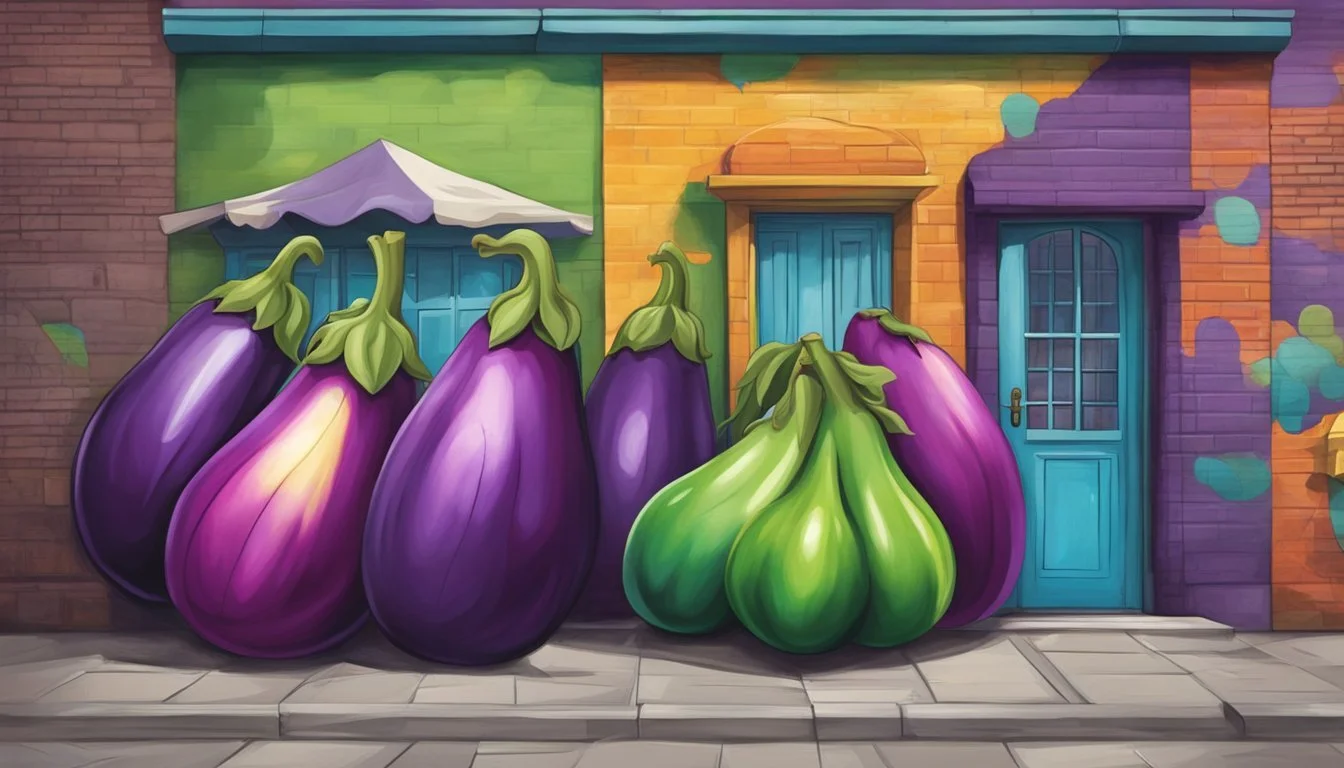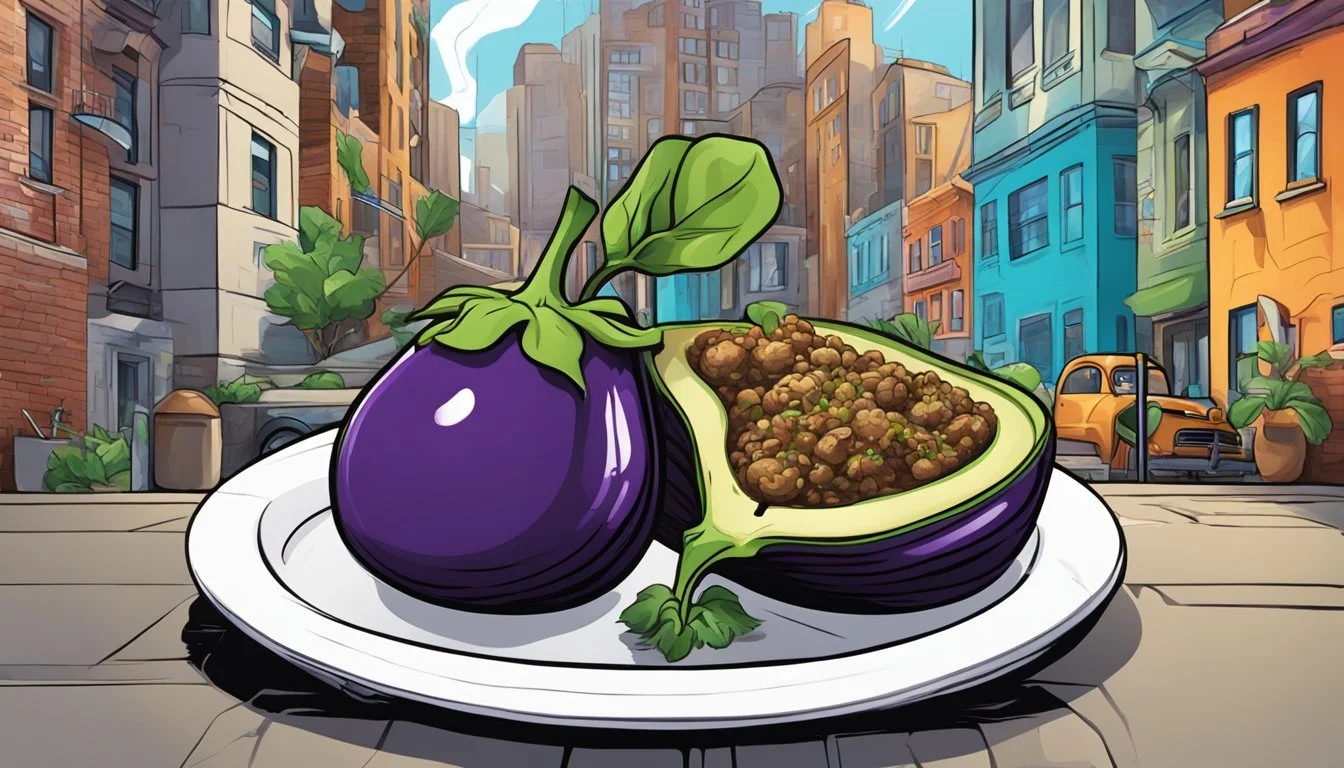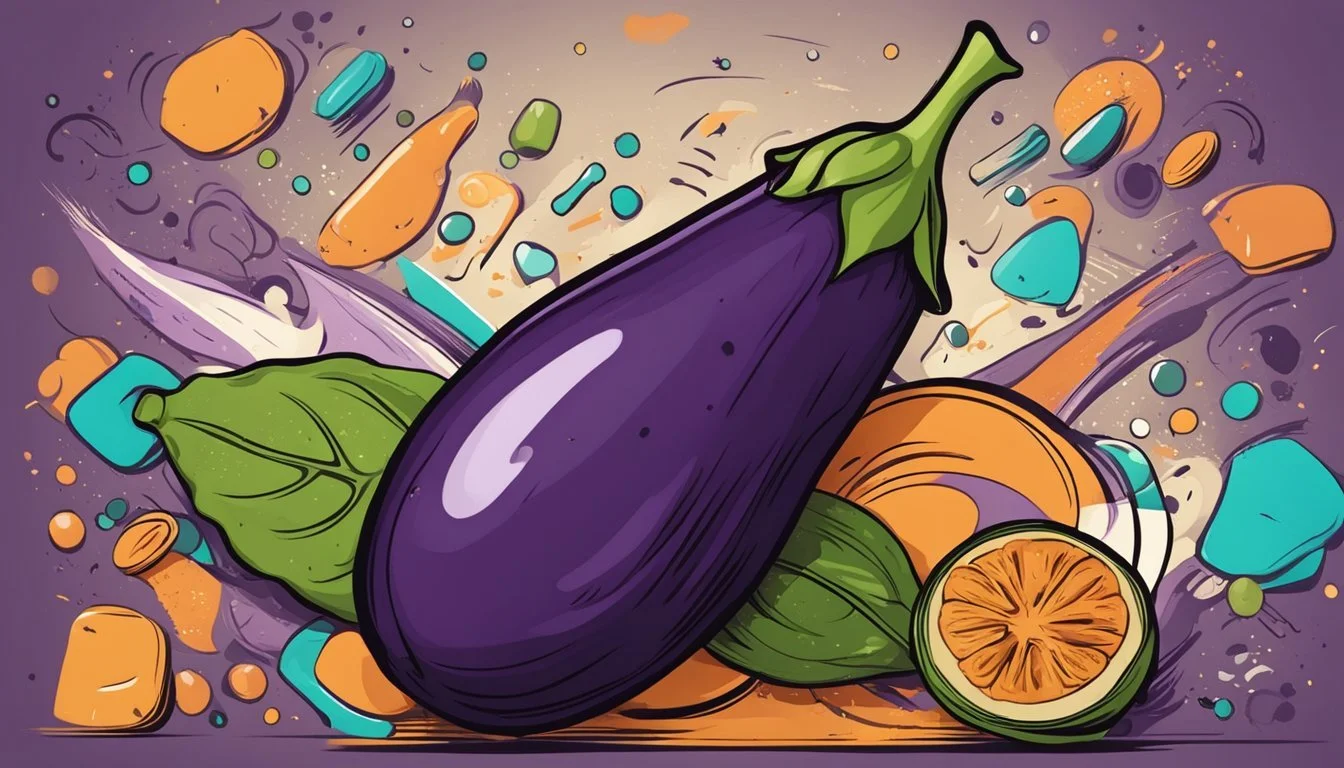Graffiti Eggplant Substitutes
Best Alternatives for Recipes
Graffiti eggplant, with its striking purple and white striped skin, adds both visual appeal and a unique flavor to dishes. However, finding this particular variety can sometimes be challenging. Fortunately, there are several suitable substitutes that can replicate its texture and culinary versatility.
Firm or extra-firm tofu stands out as an excellent substitute, offering a similar consistency and an impressive ability to absorb flavors during cooking. Other viable options include zucchini, which provides a comparable texture, and mushrooms, known for their earthy taste. Each substitute brings its own twist to recipes, allowing for creative culinary experimentation.
Whether you are grilling, roasting, or sautéing, these alternatives can seamlessly replace graffiti eggplant in your favorite recipes. Exploring these substitutes can broaden your cooking repertoire and ensure that your dishes remain flavorful and satisfying, even when graffiti eggplant is not readily available.
Understanding Graffiti Eggplant
Graffiti eggplants are appreciated for their unique properties and versatility in cooking. They sport a visually appealing appearance and a distinct flavor that set them apart from other eggplant varieties.
Characteristics of Graffiti Eggplant
Graffiti eggplants are easily recognizable due to their smaller size and vibrant skin, which showcases a mix of purple and white streaks. These eggplants have a tender texture and a slightly sweet flavor, differentiating them from the more common purple globe eggplants. The skin is thinner, making it less bitter and easier to cook without peeling.
Inside, the flesh of the graffiti eggplant is creamy and less spongy. This variety also has fewer seeds, which can contribute to a smoother consistency in dishes. The combination of its sweet flavor and mild bitterness allows it to complement various ingredients without overpowering them.
Culinary Uses
Graffiti eggplants can be prepared using multiple cooking methods. Roasting, grilling, and sautéing are popular techniques that enhance their natural flavors. When roasted, they develop a slightly smoky taste and a creamy interior, making them a delightful addition to salads or grain bowls.
Grilled graffiti eggplants pair well with Mediterranean dishes, offering a robust and savory element. They can also be sautéed and incorporated into stir-fries or pasta dishes, where their tender texture and sweet flavor blend harmoniously with other ingredients.
In classic recipes like eggplant parmesan or baba ghanoush, graffiti eggplants provide a unique twist. Their vibrant appearance and mild bitterness can elevate the visual appeal and taste profile of traditional eggplant dishes.
Common Eggplant Varieties
Different types of eggplants offer distinct appearances, flavors, and culinary uses. Some popular varieties include Chinese, Japanese, Italian, and White eggplants, each with unique attributes.
Differences Beyond Appearance
Eggplants vary not only in shape and color but also in texture and taste. Chinese eggplants are long and slender, with a mild flavor and tender skin. Japanese eggplants are similar but slightly smaller and often have a more delicate taste.
Italian eggplants, the most widely recognized type, are large, pear-shaped, and have a deep purple skin. Their flesh is spongy and can absorb flavors well. White eggplants feature firm flesh and a slightly more bitter taste, making them distinct in recipes.
Availability in Grocery Stores
Most grocery stores stock common varieties like Italian and Japanese eggplants year-round. Chinese eggplants can be found in well-stocked supermarkets and Asian grocery stores. Some lesser-known varieties, like certain white eggplants, might be available only seasonally or at specialty stores.
When shopping for eggplants, freshness is key. Look for smooth, glossy skin and a firm feel. Avoid eggplants with blemishes or soft spots, as these indicate overripeness or decay.
Top Substitutes for Graffiti Eggplant
When seeking alternatives to graffiti eggplant, selecting suitable substitutes is essential for maintaining the dish's flavor, texture, and nutritional value. This section outlines some excellent options such as zucchini, summer squash, root vegetables, and various types of mushrooms.
Zucchini and Summer Squash
Zucchini and summer squash are versatile substitutes for graffiti eggplant. They have a mild taste and can be used in similar recipes. Both vegetables have a slightly firmer texture when cooked, which helps them hold up well in dishes such as ratatouille, casseroles, and stir-fries.
To prepare, simply slice or dice them as needed. When sautéing, use olive oil for added flavor. Their ability to absorb seasonings makes them a good match for sauces and marinades. Whether grilled, roasted, or baked, zucchini and summer squash create tasty results.
Root Vegetables Alternatives
Root vegetables like turnips, rutabagas, and carrots offer a hearty, earthy flavor that can replace graffiti eggplant in specific recipes. Turnips and rutabagas, in particular, work well in stews, soups, and roasted dishes.
Their dense texture provides a satisfying bite. Carrots bring a subtle sweetness that complements a variety of flavors. When preparing, cut them into chunks or slices. They can be roasted with a drizzle of olive oil or added to stews directly.
These root veggies bring a different but delightful twist to your favorite dishes.
Mushroom Varieties as Substitutes
Mushrooms, especially portobello and shiitake varieties, are excellent substitutes due to their meaty texture and rich, umami flavor. Portobello mushrooms can be grilled or sautéed, making them ideal for sandwiches and burgers. They also soak up sauces beautifully.
Shiitake mushrooms add depth to stir-fries and pasta dishes. Clean the mushrooms thoroughly and slice them before cooking. Their robust flavor stands well on its own or when seasoned. Mushrooms offer a unique texture similar to graffiti eggplant, making them a reliable choice in many recipes.
Specialized Substitutes
Finding the right substitute for graffiti eggplant can depend on dietary restrictions, texture preferences, or the need for a meat alternative. Below are specialized options tailored for such needs.
Alternatives for Allergy Sufferers
For those allergic to eggplants, portobello mushrooms and zucchini serve as excellent substitutes.
These vegetables offer a similar texture without triggering allergic reactions. Portobello mushrooms provide a meaty feel, while zucchini’s mild taste blends well with other ingredients. Both options are versatile, suitable for grilling, roasting, or adding to casseroles. Furthermore, they are naturally gluten-free and vegan, making them suitable for various diet plans.
Low-Sliminess Options
If a slimy texture is a concern, bell peppers and turnips are great choices.
Bell peppers offer a firm texture and a sweet, vibrant flavor that acts as a counterpoint to eggplant’s typical sliminess. Turnips, on the other hand, have a more neutral taste and a firm, crunchy texture that maintains its integrity during cooking. These options prevent the sliminess but still provide a fulfilling culinary experience.
Meat Substitutes for Vegetarians
Tofu stands out as a prime eggplant substitute for vegetarians seeking a meat-like texture.
Firm or extra firm tofu has the ability to absorb flavors well, similar to eggplant. It can be grilled, stir-fried, or baked, making it versatile in many recipes. As a protein-rich option, tofu not only mimics the texture of meat but also enhances the nutritional profile of vegetarian dishes, providing a satisfactory meat substitute.
Using these specialized substitutes, individuals can tailor their cooking to meet specific dietary needs and preferences while maintaining flavor and texture in their dishes.
Preparing Substitutes in Dishes
When preparing substitutes for graffiti eggplant, it is essential to consider how each alternative's flavor and texture will complement the dish. Specific cooking techniques can enhance these substitutes for a seamless integration into your recipes.
Adjusting for Flavor and Texture
Tofu: Firm or extra firm tofu works well due to its ability to absorb flavors during cooking. Marinate tofu in olive oil, garlic, and soy sauce to achieve a savory taste. Draining the tofu before cooking helps maintain a firm texture.
Mushrooms: Mushrooms, especially Portobello, capture an umami flavor similar to eggplant. They should be brushed with olive oil and seasoned with salt before grilling or frying. This enhances their meaty texture.
Okra: For those preferring a vegetable substitute, okra's mild taste and slightly mushy texture make it ideal for stews and sauces. Soaking okra in vinegar before cooking can reduce its sliminess.
Cooking Techniques for Best Results
Grilling: When grilling vegetables like mushrooms or tofu, ensure they are cut into thick slices to prevent them from drying out. Use direct heat for a slightly charred, smoky flavor. Brush with olive oil to prevent sticking.
Frying: Frying substitutes can give them a crispy exterior while maintaining a soft inside. Use a non-stick pan and a generous amount of oil. Season the substitutes before frying for more depth in flavor.
Stir-Fry: Stir-frying is an excellent method for turnips or okra, which can be thinly sliced and quickly cooked at high heat. This method preserves their texture and allows the flavors to meld well with sauces and other ingredients.
Careful adjustments and appropriate cooking techniques ensure that these substitutes can effectively replace graffiti eggplant, delivering delightful flavors and desirable textures in your dishes.
Nutritional Considerations
When considering substitutes for Graffiti eggplant, it's essential to evaluate their nutritional profiles. This ensures you're making informed choices that align with your dietary goals.
Caloric and Nutrient Comparisons
Eggplants are low in calories, with approximately 25 calories per cup (about 82 grams). They are also rich in dietary fiber, vitamins B1 and B6, and potassium.
Zucchini: With a similar calorie count, about 20 calories per cup, zucchini is also high in vitamin C and potassium. It provides a good alternative with a comparable texture.
Portobello Mushrooms: These contain around 20 calories per cup. High in selenium and vitamin D, they offer a different nutrient profile but maintain a similar savory flavor.
Butternut Squash: Higher in calories (about 63 per cup), it’s rich in vitamins A and C, offering a sweeter taste and a different texture.
Different substitutes offer various nutritional benefits. Reviewing these details helps in selecting the best option for your particular needs.
Specific Dish Substitutions
Graffiti eggplants are often used in a variety of dishes from ratatouille to grilled and roasted preparations. Identifying the best substitutes can enhance your cooking experience without compromising on flavor and texture.
For Ratatouille and Stews
Zucchini, bell peppers, and yellow squash are effective substitutes. When cooked, these vegetables absorb flavors well, much like graffiti eggplant. Zucchini adds a soft texture, while bell peppers contribute a slight sweetness. Yellow squash provides creaminess, making it ideal for hearty stews.
For Eggplant Parmesan and Italian Cuisine
Portobello and shiitake mushrooms are ideal for eggplant parmesan. They offer a similar soft texture and absorb seasonings excellently. Zucchini can also work well, especially sliced and breaded. Additionally, cauliflower makes a fine alternative in moussaka, matching the dish's complexity.
For Asian-Inspired Dishes
Mushrooms, specifically shiitake, easily replace graffiti eggplant in stir-fries and curries. They provide an earthy flavor and retain their shape. Bell peppers serve as a colorful and sweet substitute in Asian dishes, complementing spices like garlic and curry. Artichoke hearts also fit well in these recipes.
For Grilled and Roasted Preparations
Portobello mushrooms are a top choice here due to their meaty texture and size. Grilling bell peppers and zucchini can match the smoky, charred essence of grilled graffiti eggplant. Drizzling these substitutes with olive oil and seasoning with pepper and garlic ensures a flavorful outcome.
Through these substitutions, you can maintain the integrity and essence of your favorite dishes without graffiti eggplant.
Seasoning and Flavor Tips
When substituting graffiti eggplant, it's essential to highlight the flavors and seasonings that can elevate your dish. Using the right combination of spices, herbs, and seasoning can create a balanced and flavorful meal.
Enhancing Substitute Ingredients
To bring out the sweet flavor in substitutes like zucchini and carrots, combine them with garlic and a sprinkle of kosher salt. This simple seasoning enhances their natural sweetness.
For those opting for mushrooms or tofu, emphasizing the umami flavor is key. Soy sauce and black pepper work well here. Adding bell peppers can introduce a hint of bitterness, balancing the rich umami profile.
If you prefer a spicy kick, consider using chili flakes or cayenne pepper. These spices pair exceptionally well with firmer substitutes, such as turnips or butternut squash, bringing a warming heat to the dish.
Handling and Storage
Proper handling and storage of graffiti eggplants and their substitutes, such as turnips, rutabagas, tomatoes, green tomatoes, and sweet potatoes, can ensure extended freshness and quality. These steps will help keep these vegetables in optimal condition.
Preserving Freshness and Quality
Graffiti eggplants: Store unwashed graffiti eggplants in the refrigerator's crisper drawer. Wrap them in a paper towel inside a perforated plastic bag to maintain humidity. Use within 4-5 days.
Turnips and rutabagas: Cut off the greens and store them separately. Keep the roots in a plastic bag in the refrigerator, where they can last for a couple of weeks.
Tomatoes and green tomatoes: Avoid refrigeration to retain flavor. Instead, store them in a cool, dry place away from sunlight. Use ripe tomatoes within a few days.
Sweet potatoes: Keep in a cool, dark, and well-ventilated area. Avoid refrigerating to prevent hardening. Sweet potatoes can last a couple of weeks if stored properly.










